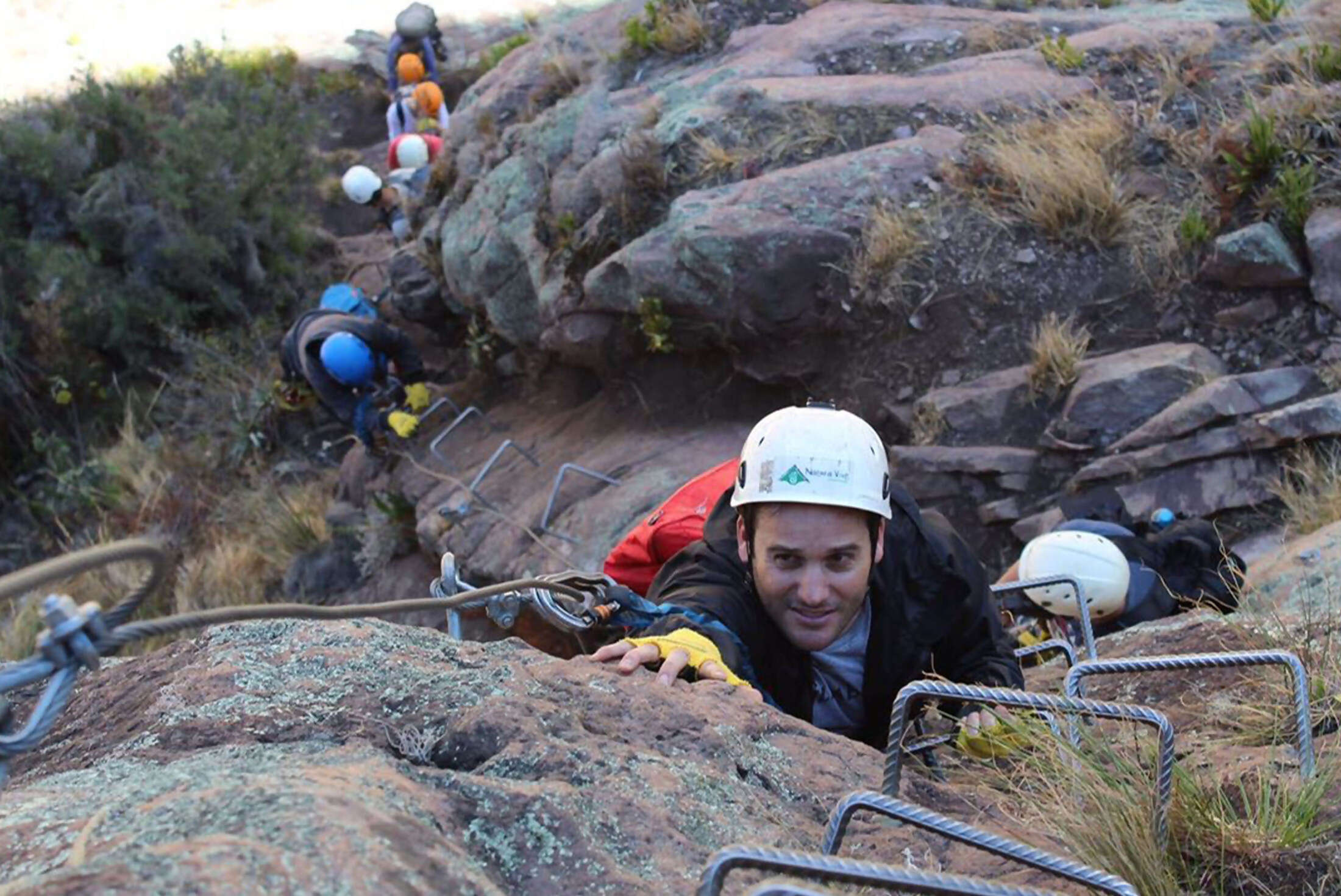 Travel to Peru and retrace the steps of the ancient Inca as you trek through the fertile heartland of the Peruvian Amazon on foot. Fly through the air on zip wires, haul yourself up cliff faces on via ferratas and pedal past farming communities as you get closer to the secrets of this elusive civilisation on a breathtaking adventure along the Inca Trail.
Travel to Peru and retrace the steps of the ancient Inca as you trek through the fertile heartland of the Peruvian Amazon on foot. Fly through the air on zip wires, haul yourself up cliff faces on via ferratas and pedal past farming communities as you get closer to the secrets of this elusive civilisation on a breathtaking adventure along the Inca Trail.Highlights
Climbing the via ferratas in Urubamba is safe yet fun and exhilarating. It allows you to step outside your comfort zone and explore the Sacred Valley of the Incas with an eagle's eyes perspective.
You will bike through farms and rolling hills normally reserved for llamas and local farmers
Whether you trek the Inca Trail or the equally stunning Quarry Trail, camping under the Andean stars is an experience you'll treasure for ever.








- You will visit the following places:
-

Lima
Lima is the capital and largest city of Peru. It is located in the valleys of the Chillón, Rímac and Lurín rivers, in the central part of the country, on a desert coast overlooking the Pacific Ocean. Together with the seaport of Callao, it forms a contiguous urban area known as the Lima Metropolitan Area. With a population fast approaching 9 million, Lima is the fifth largest city in Latin America, behind Mexico City, São Paulo, Buenos Aires and Rio de Janeiro. Lima is home to one of the largest financial hubs in Latin America. It has been defined as a beta world city by GaWC international rankings. It was founded by Spanish conquistador Francisco Pizarro on January 18, 1535, as La Ciudad de los Reyes, or "The City of Kings."
-

Cusco
Cusco, often spelled Cuzco, is a city in southeastern Peru, near the Urubamba Valley of the Andes mountain range. It is the capital of the Cusco Region as well as the Cusco Province. In 2013, the city had a population of 435,114. Located on the eastern end of the Knot of Cuzco, its elevation is around 3,400 m (11,200 ft). The site was the historic capital of the Inca Empire from the 13th until the 16th-century Spanish conquest. In 1983 Cusco was declared a World Heritage Site by UNESCO. It has become a major tourist destination, hosting nearly 2 million visitors a year. The Constitution of Peru designates it as the Historical Capital of Peru.